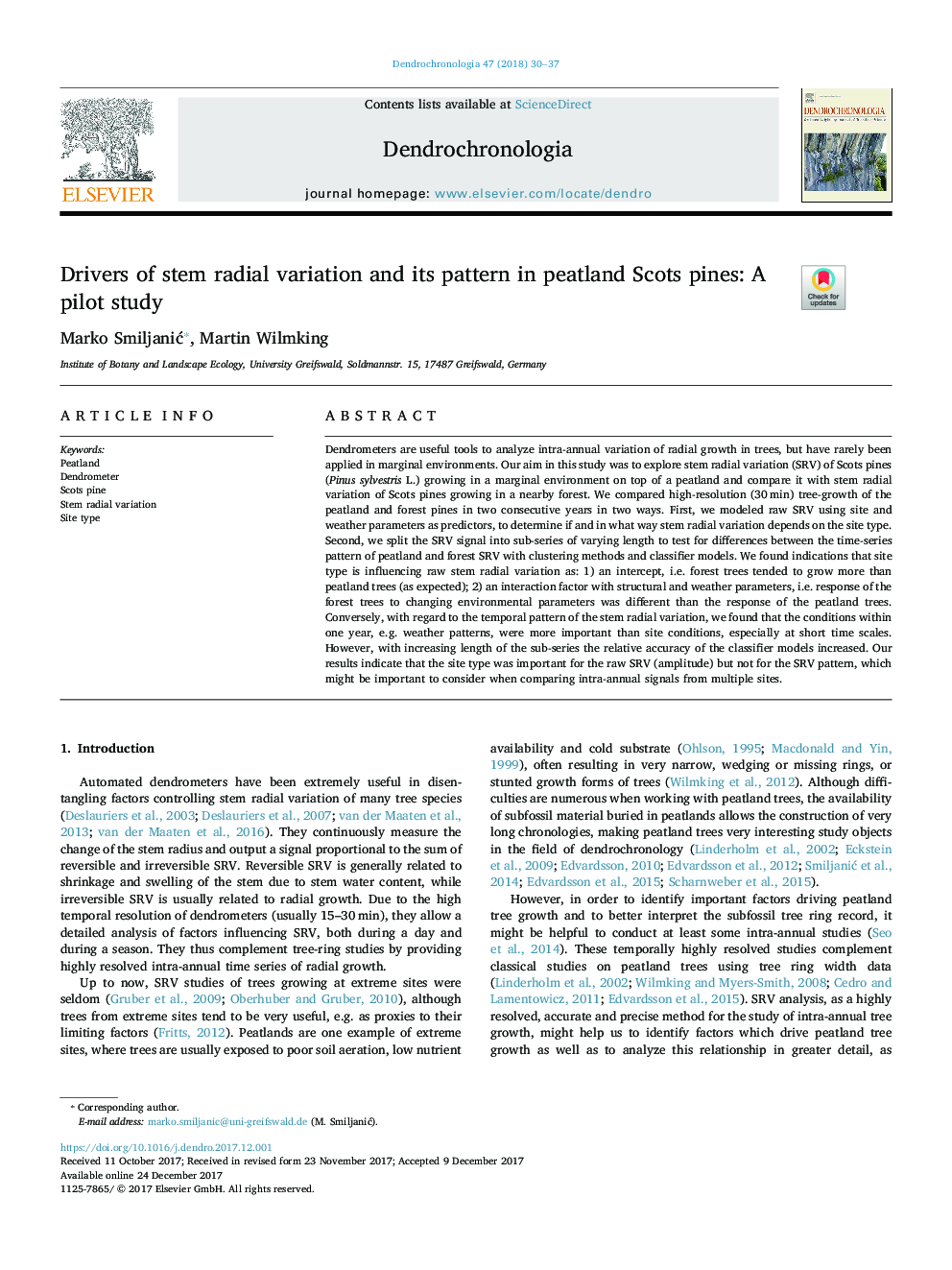| Article ID | Journal | Published Year | Pages | File Type |
|---|---|---|---|---|
| 6541319 | Dendrochronologia | 2018 | 8 Pages |
Abstract
Dendrometers are useful tools to analyze intra-annual variation of radial growth in trees, but have rarely been applied in marginal environments. Our aim in this study was to explore stem radial variation (SRV) of Scots pines (Pinus sylvestris L.) growing in a marginal environment on top of a peatland and compare it with stem radial variation of Scots pines growing in a nearby forest. We compared high-resolution (30â¯min) tree-growth of the peatland and forest pines in two consecutive years in two ways. First, we modeled raw SRV using site and weather parameters as predictors, to determine if and in what way stem radial variation depends on the site type. Second, we split the SRV signal into sub-series of varying length to test for differences between the time-series pattern of peatland and forest SRV with clustering methods and classifier models. We found indications that site type is influencing raw stem radial variation as: 1) an intercept, i.e. forest trees tended to grow more than peatland trees (as expected); 2) an interaction factor with structural and weather parameters, i.e. response of the forest trees to changing environmental parameters was different than the response of the peatland trees. Conversely, with regard to the temporal pattern of the stem radial variation, we found that the conditions within one year, e.g. weather patterns, were more important than site conditions, especially at short time scales. However, with increasing length of the sub-series the relative accuracy of the classifier models increased. Our results indicate that the site type was important for the raw SRV (amplitude) but not for the SRV pattern, which might be important to consider when comparing intra-annual signals from multiple sites.
Related Topics
Physical Sciences and Engineering
Earth and Planetary Sciences
Atmospheric Science
Authors
Marko SmiljaniÄ, Martin Wilmking,
